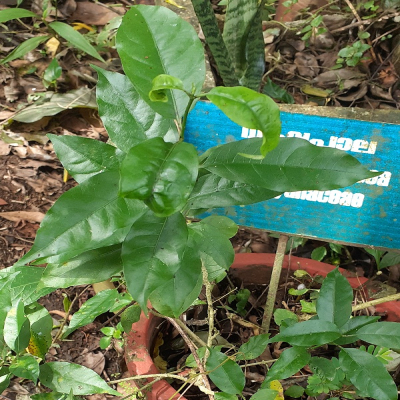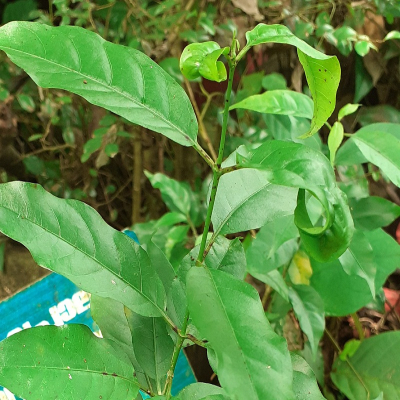Vallaris solanacea (Roth)O. Kuntze
Family : Apocynaceae
Parts Used : Milky juice
Vernacular Names :-
| English | : | Vallaris |
| Malayalam | : | Vishappala |
| Hindi | : | Chamarikivel, Dudhibel, Ramsar |
| Sanskrit | : | Bhadramunja, Bhadravalli, Visalyakrit |
| Telungu | : | Nagamalle, Nityamalle, Palamalletivva, Puttapodarayarala, Visalyakarani |
Distribution and habitat: More or less throughout India.
Botany: A large woody climbing shrub. Bark thick, yellowish white, smooth.
- Leaves : Simple, opposite, elliptic oblong or lanceolate, 5-11.5 X 2.5-3.3 cm, elliptic lanceolate, or oblong- lanceolate, acutely acuminate, usually glabrous, pellucid- dotted, base acute. Petioles 8-13 mm long, with glands in the axils.
- Flowers : Creamy white, fragrant, in axillary 3-10 flowered lax cymes. Peduncles slender, glabrous or pubescent. Pedicels pubescent often decurved. Bracts linear- lanceolate, acute, pubescent. Calyx pubescent, 3 mm long, lobes 2.5 mm long, ovate-oblong, pubescent, a little shorter than the corolla tube. Corolla finely pubescent out side. Stamens 5, attached at the throat of the tube. Anthers acute, connivent in to a sharp cone, exserted and connate. Ovary hairy, style hairy, stigma pointed.
- Fruits : 10-15 by 3.8-5 cm, straight, somewhat accuminately pointed, fibrously striate.
- Seeds : 1.3 cm long, ovoid, beaked 2cm long of silvery white hairs.
Properties: Bark is bitter and astrigent. Leaves and bark as analgesic, antimicrobial, anti diarrhoeal and cardiotonic properties.
Chemical constituents: Leaves and seeds contain cardiac glycosides, triterpenes etc. b-sitosterol,b-amyrin, ursolic acid, vallaro-side, solanoside, vallarosolanoside and acoschimperoside P are present in leaves.
Uses: Milky latex of the plant is used in inflammations of old sores, to treat ring worms, and other skin infections. From root bark essential oils are identified.
Formulations: Vishagarabhataila
Propagation: Seeds.



